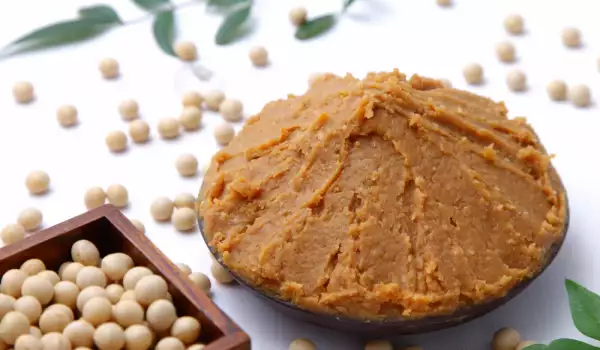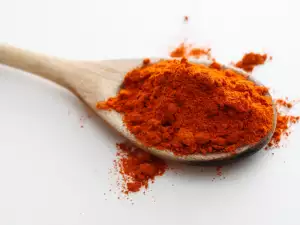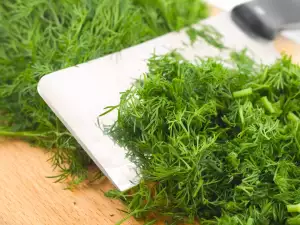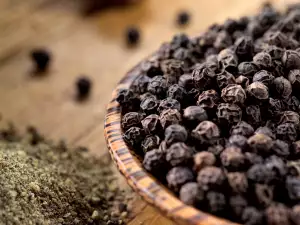Miso is a traditional Japanese seasoning, which has been declared one of the healthiest in the world. Although we call it seasoning, miso is a rather thick and sticky paste, which has a very salty taste and rich aroma. Miso is produced by the fermentation of soybeans, barley or rice, which are soaked in water, salt and a special kind of mold fungus called "Coccine." The fermentation process is very long - lasting weeks or even years. The fermented products are ground to a fine paste.
The color, taste and texture of miso, and the exact degree of salinity depends on the exact ingredients and the very duration of the degree of fermentation. The color of miso ranges from white to brown. Light types are milder in flavor and have less salt, while the darker ones are more salty and have a significantly more intense flavor.
History of miso
The origins of miso can be traced back to ancient China. A predecessor of miso is considered "hisio" - a spice that has been prepared from fermented soy, alcohol, wheat, salt and other ingredients. It is considered a luxury food, so it had only been used in the kitchens of aristocrats and wealthy people.
In Japan, soybean miso paste was introduced around the 7th century, but has since become an integral part of the national cuisine of the country. The process of making miso is considered an art in Asia and is deeply honored, just as other parts of the world honor the tradition of producing quality wines and cheeses, for example.
Composition of miso
Miso is high in protein, magnesium, zinc, isoflavones, saponins, and vitamin K. Mushrooms used for the fermentation process, synthesize the extremely valuable vitamin B12, which is found mainly in animal products. Very little miso can provide the recommended daily dose of zinc, manganese and copper.
100 g miso contains 200 calories, 12 g protein, 6 g fat, 27 g carbohydrates and 5.5 g fiber.
Types of miso
Red miso - made from rice, soy or barley in natural fermentation, which lasts three years. The color of red miso varies from red to brown. Red miso contains the highest levels of protein of all kinds of miso.
White miso - as the name implies, this is a white paste. The color is due to large quantities of Koji rice /60%/ and smaller amounts of soy in white miso. This miso is the most high-carb, so it has a sweeter taste. White miso’s texture is very smooth. Due to the high content of carbohydrates, fermentation is very fast and takes only a few weeks.
Shiromiso - a very dark, almost black sort. Prepared from barley and soybeans. This miso is more salty than others. This is the cheapest miso on the market, but has largely lost its popularity. Ferments for one to three years.
Soybean miso - made only from soybeans. These are very low in carbohydrates and ferment for at least one year.

Selection and storage of miso
Miso is a popular product. You can find it in specialty stores or organic food diet shops. Store miso paste in the fridge after opening, because its composition includes living organisms. Shelf life of white miso is shorter than other species - about two months in the refrigerator.
Culinary uses of Miso
Miso is traditionally associated with the eponymous Japanese soup - Miso. However miso can be used to replace salt in the kitchen to enhance the taste of various marinades, soups, dressings for salads and cooked dishes. The easiest option for consumption of miso is on a slice of wholemeal bread and garnished with sprouts. It is a fast and extremely healthy snack that you can eat between meals.
Red miso is ideal for stews, miso soup, marinades for meat, poultry and vegetables. White miso is mostly used for flavoring soups, light salad dressings and marinades for fish. Black miso is used as a spice in richer soups, stews, beans and various sauces.
However, one can not overlook the recipe for miso soup. Its fans in Japan are endless. Some even consume it twice daily. In the past, miso soup was a favorite of the imperial court, which is why to this day, it has many recipes. Here is a more affordable recipe for miso soup.
You need about 70 g tofu, 1 tbsp white miso, half a stalk of leek, a few mushrooms, slices of white radish and half a carrot.
Preparation: Cut the radish and carrots into thin strips and drop them into a pan with 500ml boiling water. After about 2 minutes, add the sliced mushrooms, leeks and onions. Cut the tofu into cubes and add it. Finally, the soup is flavored with a little white miso diluted in lukewarm water and allowed to simmer until ready.
Benefits of miso
Miso contains valuable amino acids that make it a very important source of protein. Also stimulates the secretion of digestive fluids in the stomach, restores beneficial probiotics in the intestines, helping the process of digestion, it is an excellent plant source of vitamin /especially B12/.
It is believed that miso improves blood and lymphatic fluid, reduces the risk of developing breast, prostate, lung and colon cancer. The useful spice is high in antioxidants, making it a valuable protection against the harmful action of free radicals in the body. Miso protects the body from radiation, enhances the overall performance of the immune system and lowers the levels of bad cholesterol in the blood.




















Comments